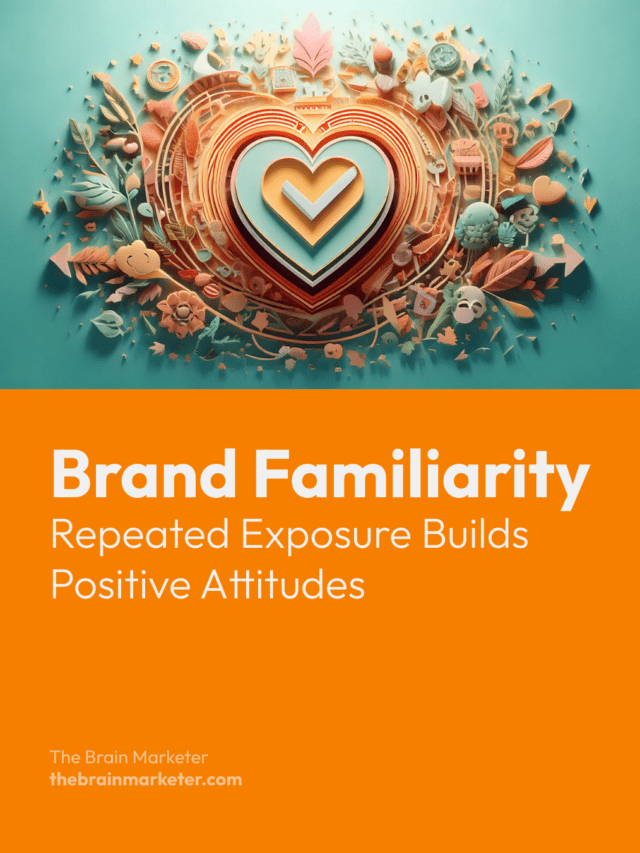Introduction
Why do we tend to choose brands we’re familiar with, even when there are other alternatives available? The concept of brand familiarity explains why repeated exposure to a brand or stimulus can foster a sense of comfort and trust, ultimately leading to positive attitudes and consumer preference. In this article, we explore how brand familiarity works, why it reduces uncertainty for consumers, and how it influences buying behavior.
🎙️ Unpack the Topic with this Podcast
What Is Brand Familiarity?
Brand familiarity is the result of consistent exposure to a brand or product. Over time, this exposure leads to recognition, comfort, and an increased likelihood of preference for the brand. This phenomenon is based on the mere exposure effect, which suggests that people tend to develop a preference for things simply because they are familiar with them.
Example: When you walk into a grocery store, you’re more likely to choose a brand you’ve seen before on TV, on social media, or in advertisements because the repeated exposure makes it feel like a safe choice.
How Familiarity Reduces Consumer Uncertainty
One of the key reasons brand familiarity is so effective is because it reduces uncertainty. Humans naturally prefer what feels familiar, as it provides a sense of security and predictability.
1. Familiarity and Trust: Familiar brands are often perceived as more trustworthy. The brain associates repeated exposure with reliability, which means that the more often a consumer encounters a brand, the more comfortable they feel with it.
Example: When you see the same brand of coffee every time you visit the store, you subconsciously begin to trust it more than a new or unfamiliar brand. This reduction in uncertainty makes the familiar brand the safer choice.
Marketing Strategy: Repeated exposure through consistent branding across multiple channels (TV, social media, billboards) helps strengthen familiarity and reduces the perceived risk of choosing a brand. This is why consistent brand imagery, colors, and messaging are crucial.
Attitude as a Predictor of Consumer Behavior
Attitude is a powerful predictor of human behavior. If a consumer develops a positive attitude toward a brand due to repeated exposure, this attitude can influence their future preferences and decision-making.
2. Positive Attitudes Lead to Purchase: Once a consumer has formed a favorable attitude toward a brand, they are more likely to develop a preference for it and choose it over competitors when making a purchase decision. The more positive their attitude, the stronger the likelihood of conversion.
Example: A consumer might initially have no preference for laundry detergent brands, but after seeing repeated advertisements for Tide that emphasize cleanliness and reliability, they develop a favorable attitude toward the brand. When they need to buy detergent, they are more likely to choose Tide because of the positive association built through repeated exposure.
Neuromarketing Insight: Positive emotions play a key role in shaping attitudes. By associating a brand with positive feelings—such as happiness, security, or excitement—marketers can reinforce the consumer’s attitude toward the brand, making it easier for the brand to be chosen when the time for purchase arrives.
Leveraging Brand Familiarity in Marketing Campaigns
To maximize the benefits of brand familiarity, it’s important to create marketing campaigns that focus on consistency and repetition.
1. Consistent Messaging Across Channels:
Brands must maintain consistent messaging and visuals across all platforms. This consistency helps build familiarity by ensuring that consumers encounter the same message, whether they’re browsing online, watching TV, or walking down the street.
Marketing Strategy: Use omnichannel marketing to reach your audience across multiple touchpoints—social media ads, email marketing, billboards, and in-store displays. The key is to reinforce the brand identity in every interaction.
2. Repetition to Build Familiarity:
Repetition is the cornerstone of building familiarity. The more often consumers see your brand, the more they will trust it and develop a positive attitude toward it.
Example: Fast food brands like McDonald’s are masters of repetition. By continually reinforcing their brand through TV ads, billboards, digital media, and physical locations, they stay top-of-mind for consumers, making it an easy choice when it’s time for a quick meal.
Conclusion
Brand familiarity is a powerful tool in shaping consumer behavior. By reducing uncertainty and fostering positive attitudes through repeated exposure, brands can build strong connections with consumers that influence future purchase decisions. Remember, the more familiar your brand is, the more likely it is to be chosen.

Vincent Heimann is a marketing project manager and neuromarketing enthusiast. He founded The Brain Marketer to bridge neuroscience and marketing through accessible, science-based content. With over 10 years of experience in digital strategy, UX/UI and communication, he shares practical insights to help brands connect with the human brain — ethically and effectively

